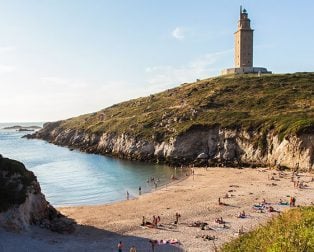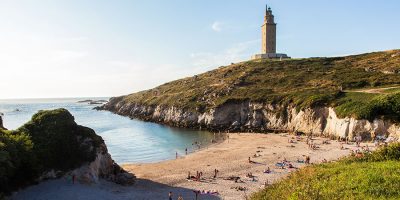Landmarks and Culture of A Coruña
For centuries, pilgrims from northern shores arrived in the harbour of A Coruña on their way to Santiago de Compostela. Their Camino de Santiago had taken them across the sea, but 75km still remained before reaching the city of St James. This final walk marked the end of their pilgrimage journey. Today, A Coruña is a popular starting point on the Camino Inglés and the route known as the Celtic Camino. Fashion lovers know it as the hometown of Zara. Football fans remember it for its team, Deportivo de La Coruña. The Atlantic Ocean continues to shape A Coruña’s spirit and charm. Its harbour has welcomed travellers for centuries.
Table of contents
It has seen pilgrims, invaders, emigrants heading to America, and the bustle of trade and commerce. If you begin your Camino in A Coruña, don’t miss these highlights in this vibrant and beautiful coastal city.
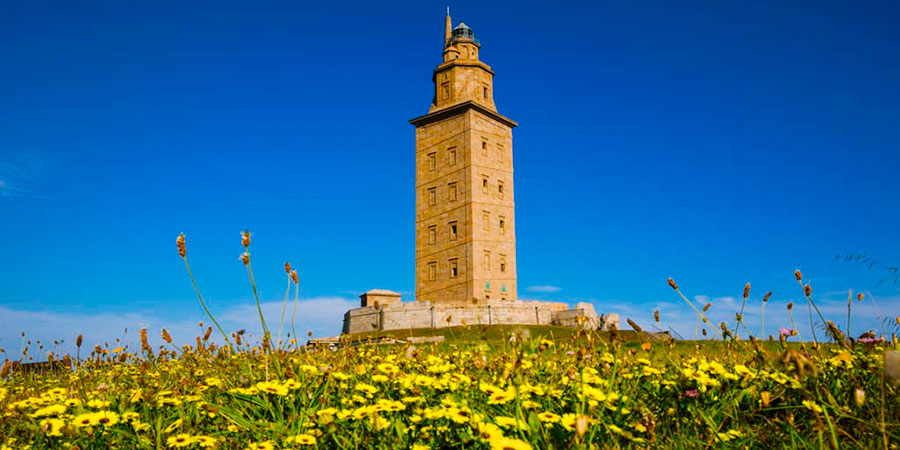
Torre de Hercules
If there is one place you shouldn’t miss in A Coruña, it’s the Torre de Hércules, or Hercules Tower in English. This ancient Roman lighthouse is the city’s most iconic landmark and a proud symbol of its long maritime history. For over 2,000 years, it has guided ships safely into the harbour. Built by the Romans in the 1st century, the tower still works as a marine signal, making it the only fully preserved Roman lighthouse still in operation. It has been recognised as a UNESCO World Heritage Site for its historical and architectural value. The tower has also inspired many legends over the centuries. One of the most famous stories appears in the Book of Invasions, written by Irish monks in the 11th century.
According to this tale, the chieftain Breogán founded the city and built the tower. From its top, his son Ith saw the distant green lands of Ireland and decided to sail there. Although he was killed after arriving, his brother Mil continued the journey and succeeded in conquering the land. Their people became known as the Milesians—meaning the sons of Mil—one of the legendary ancestors of the Irish.
Beach life
The Atlantic Ocean surrounds the city and the 13km-long promenade, Paseo Maritimo, is where you’ll find all the locals strolling, cycling or running on a sunny day. If it’s sunny and hot, then it’s time to chill or go for a swim at one of the city’s sandy beaches, such as Orzan and Riazor.
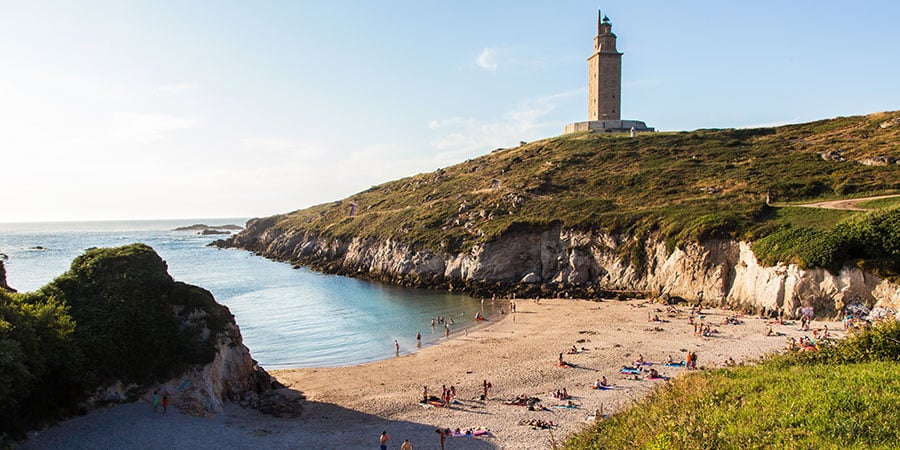
Old Town and St James’ Church
A stroll in the traffic-free old town is another must. It is here where pilgrims will find the city’s St James’ Church, a classic Romanesque temple that has welcomed Camino pilgrims for hundreds of years. It is also the second oldest monument in the town, after the Hercules Tower.
Maria Pita Square
Before leaving the old town and continuing along the way of St James, every visitor should head to the city’s main square to pay respects to Maria Pita, the city’s heroine. The city’s square, Praza de Maria Pita, is named after her and you’ll find a statue dedicated to brave Maria, who defended the city from the attacks of Sir Francis Drake. If you’d like to know more about this fascinating character, you can visit her home place, now a museum, in the Rua Herrerias 28.
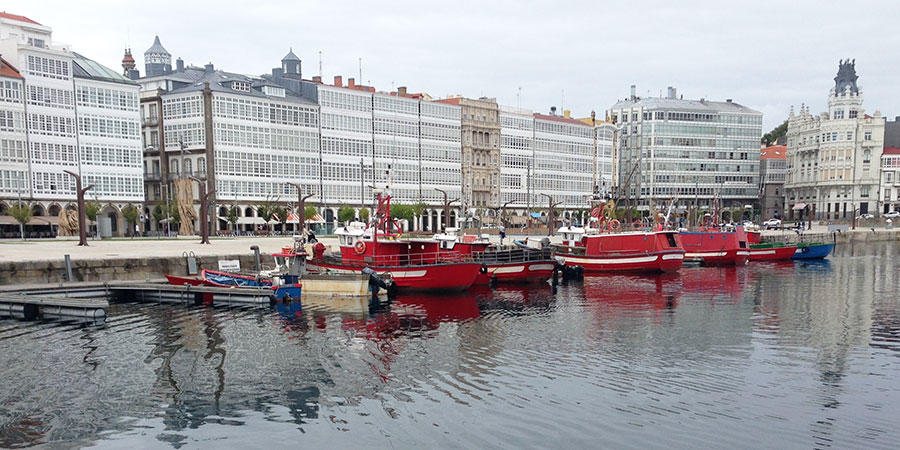
Harbour and ‘Galerias’
Just a hundred metres from Praza de Maria Pita, you’ll find yourself back at the harbour, where you’ll have the opportunity to appreciate the unique architecture of the city. Particularly beautiful are the seafront houses lined with their white balconies, known as ‘Galerias’, a classic feature in coastal towns and cities in Galicia.
Tapas
And after a day of exploring and sightseeing, it’s time for some food. The city has many restaurants and small ‘Tascas’ where you can sample a wide array of classic tapas such as squid, chorizo, croquetas and tortilla. One of the classics is the minuscule La Bombilla. Did you know A Coruña is also the birthplace of Estrella Galicia?
If you have time to spare before setting off on your Camino de Santiago journey, we highly recommend spending a few days in this beautiful city by the Atlantic. With plenty of museums, festivals, parks and countless food sports worth investigating, there is plenty to do and see in A Coruña.
For more information about the Camino Ingles, the Celtic Camino or to book your trip, please don’t hesitate to contact us.

